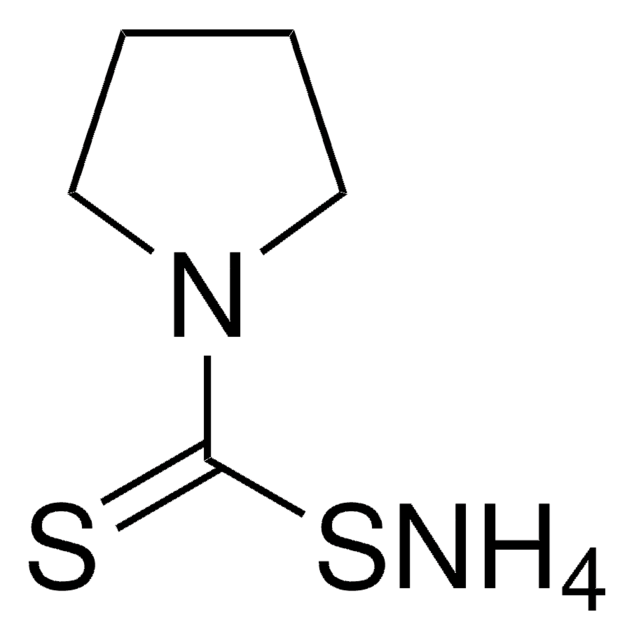319961
Tetracloruro di carbonio
reagent grade, 99.9%
Sinonimo/i:
Tetraclorometano
About This Item
Prodotti consigliati
Grado
reagent grade
Livello qualitativo
Densità del vapore
5.32 (vs air)
Tensione di vapore
143 mmHg ( 30 °C)
91 mmHg ( 20 °C)
Saggio
99.9%
Forma fisica
liquid
Indice di rifrazione
n20/D 1.460 (lit.)
P. eboll.
76-77 °C (lit.)
Punto di fusione
−23 °C (lit.)
Densità
1.594 g/mL at 25 °C (lit.)
Stringa SMILE
ClC(Cl)(Cl)Cl
InChI
1S/CCl4/c2-1(3,4)5
VZGDMQKNWNREIO-UHFFFAOYSA-N
Cerchi prodotti simili? Visita Guida al confronto tra prodotti
Categorie correlate
Descrizione generale
Applicazioni
- A precursor to synthesize high-surface-area mesoporous carbon material by a self-templating method in the presence of sodium-potassium alloy (NaK) as a reducing agent.
- A reactant to synthesize 1,2-disubstituted cyclopentanes via Cu-catalyzed ring-closing Kharasch addition reaction with 1,6-dienes.
- A solvent as well as a reactant to prepare diphenyl carbonate from phenol and carbon dioxide in the presence of ZnCl2 as a catalyst.
Avvertenze
Danger
Indicazioni di pericolo
Consigli di prudenza
Classi di pericolo
Acute Tox. 3 Dermal - Acute Tox. 3 Inhalation - Acute Tox. 3 Oral - Aquatic Chronic 3 - Carc. 2 - Ozone 1 - Skin Sens. 1B - STOT RE 1 Inhalation
Organi bersaglio
Liver,Kidney
Codice della classe di stoccaggio
6.1B - Non-combustible acute toxic Cat. 1 and 2 / very toxic hazardous materials
Classe di pericolosità dell'acqua (WGK)
WGK 3
Punto d’infiammabilità (°F)
Not applicable
Punto d’infiammabilità (°C)
Not applicable
Certificati d'analisi (COA)
Cerca il Certificati d'analisi (COA) digitando il numero di lotto/batch corrispondente. I numeri di lotto o di batch sono stampati sull'etichetta dei prodotti dopo la parola ‘Lotto’ o ‘Batch’.
Possiedi già questo prodotto?
I documenti relativi ai prodotti acquistati recentemente sono disponibili nell’Archivio dei documenti.
Il team dei nostri ricercatori vanta grande esperienza in tutte le aree della ricerca quali Life Science, scienza dei materiali, sintesi chimica, cromatografia, discipline analitiche, ecc..
Contatta l'Assistenza Tecnica.








